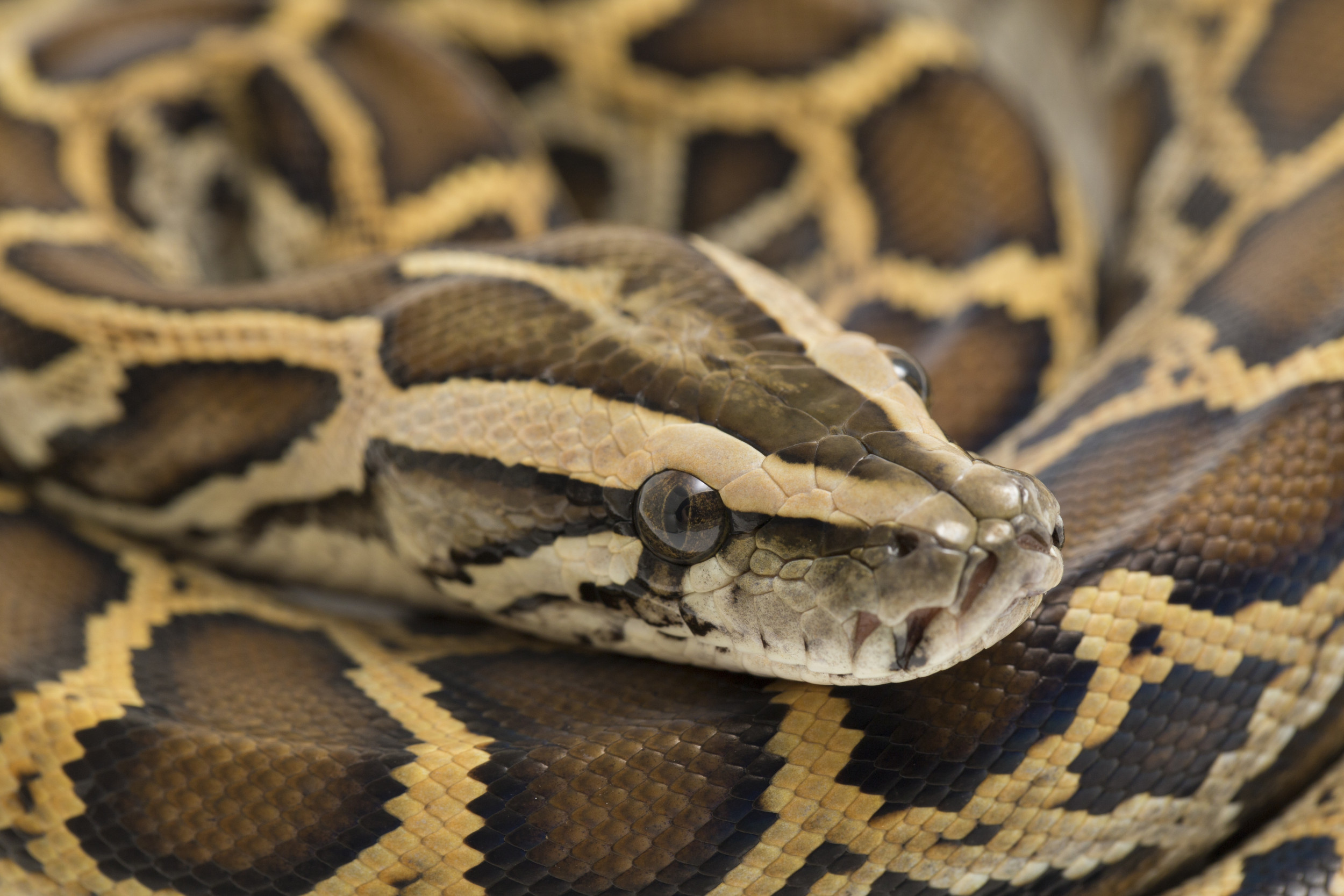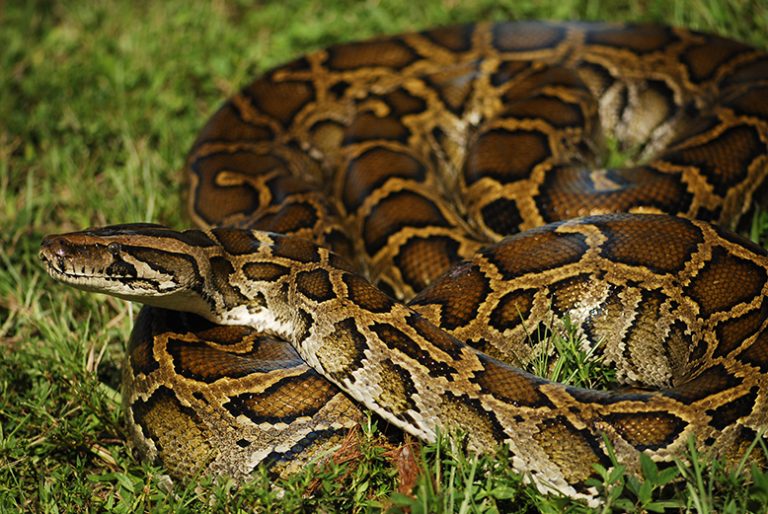When it comes to the world of reptiles, the Burmese Python stands out as one of the most intriguing and captivating creatures out there. This massive snake has been capturing the attention of wildlife enthusiasts, researchers, and even casual observers for years. But what makes the Burmese Python so special? Why does it hold such a prominent place in the reptile world? Let's dive into the details and find out why this snake is more than just a giant.
Imagine this: you're walking through the dense jungles of Southeast Asia, and suddenly you spot a snake that could easily wrap around a tree trunk or even a human being. That's the Burmese Python for you. Known for its sheer size, strength, and mesmerizing beauty, this snake has become an icon in the world of reptiles. Whether you're a hardcore herpetologist or just someone who loves learning about animals, the Burmese Python is a must-know topic.
But hold up—there's more to this snake than just its impressive size. The Burmese Python plays a crucial role in its ecosystem, and its behavior, diet, and habitat make it one of the most fascinating creatures on the planet. So, buckle up and get ready to explore the world of the Burmese Python—a true giant of the reptile kingdom!
Read also:Telugu Video Sex A Deep Dive Into Its Cultural Impact And Popularity
Table of Contents
- Introduction to the Burmese Python
- Biography and Overview
- Natural Habitat
- Diet and Feeding Habits
- Size and Growth
- Behavior and Lifestyle
- Reproduction and Lifespan
- Threats to the Species
- Conservation Efforts
- Invasive Species Concerns
- Fascinating Facts
Introduction to the Burmese Python
The Burmese Python, scientifically known as Python bivittatus, is one of the largest snakes in the world. Originating from the tropical rainforests of Southeast Asia, this snake has become a symbol of both awe and concern. Its massive size and striking appearance make it a favorite among reptile enthusiasts, but its role as an invasive species in certain regions has also sparked debates about its impact on ecosystems.
When you think of the Burmese Python, the first thing that probably comes to mind is its sheer size. These snakes can grow up to 23 feet in length and weigh over 200 pounds. But size isn't the only thing that makes them fascinating. Their ability to adapt to different environments and their unique hunting techniques have made them one of the most studied reptiles in the world.
Biography and Overview
Let's take a closer look at the Burmese Python and what makes it such a remarkable creature. Below is a quick overview of its key characteristics:
| Scientific Name | Python bivittatus |
|---|---|
| Common Name | Burmese Python |
| Average Length | 16-23 feet |
| Average Weight | 100-200 pounds |
| Lifespan | 20-30 years |
| Habitat | Tropical rainforests, swamps, and grasslands |
As you can see, the Burmese Python is not your average snake. Its impressive stats and adaptability make it a force to be reckoned with in the animal kingdom.
Natural Habitat
The Burmese Python is native to the tropical regions of Southeast Asia, including countries like Myanmar, Thailand, Vietnam, and Indonesia. These snakes thrive in environments with plenty of water, such as swamps, marshes, and rivers. They are also found in dense forests and grasslands, where they can hunt and hide from predators.
Why Water Matters
Water plays a crucial role in the life of the Burmese Python. These snakes are excellent swimmers and often use water as a means of transportation and hunting. In fact, they can stay submerged for up to 30 minutes without coming up for air. This ability allows them to ambush prey in aquatic environments, making them one of the most efficient hunters in their ecosystem.
Read also:Intriguing Insights Into Anjali Arora A Pron Multifaceted Persona
Diet and Feeding Habits
When it comes to food, the Burmese Python is not picky. These snakes are opportunistic hunters, meaning they will eat almost anything that crosses their path. Their diet typically consists of birds, mammals, and even other reptiles. But how do they catch their prey? Let's break it down:
- First, the Burmese Python uses its keen sense of smell to locate potential prey.
- Once it spots its target, the snake strikes quickly, using its powerful body to constrict the prey until it suffocates.
- After the prey is dead, the snake swallows it whole, using its flexible jaw to accommodate large meals.
Interestingly, the Burmese Python can go for months without eating after a large meal. This adaptation helps it survive in environments where food sources may be scarce.
Size and Growth
One of the most striking features of the Burmese Python is its size. These snakes can grow up to 23 feet in length and weigh over 200 pounds. But how do they get so big? Let's take a look at their growth process:
- Young Burmese Pythons grow rapidly in their first few years of life, reaching lengths of up to 6 feet by the time they are two years old.
- As they mature, their growth slows down, but they continue to gain weight and length over time.
- Factors such as diet, habitat, and genetics play a significant role in determining their final size.
Despite their massive size, Burmese Pythons are surprisingly agile and can move through their environment with ease. This adaptability makes them one of the most successful predators in their ecosystem.
Behavior and Lifestyle
Burmese Pythons are solitary creatures that spend most of their time alone. They are primarily nocturnal, meaning they are most active during the night. However, they can also be seen basking in the sun during the day to regulate their body temperature.
Social Interactions
While Burmese Pythons are generally solitary, they do interact with other snakes during the mating season. During this time, males compete for the attention of females, often engaging in combat to assert dominance. Once a mate is chosen, the female lays eggs and guards them until they hatch.
Reproduction and Lifespan
The reproductive cycle of the Burmese Python is both fascinating and complex. Female pythons lay clutches of eggs, typically ranging from 12 to 36, and guard them fiercely until they hatch. The eggs take about 60-80 days to incubate, during which the female remains close to ensure their safety.
In terms of lifespan, Burmese Pythons can live for 20-30 years in the wild, although captive specimens have been known to live even longer. Their longevity is a testament to their adaptability and resilience in the face of changing environments.
Threats to the Species
Despite their impressive size and strength, Burmese Pythons face several threats in the wild. Habitat destruction, illegal poaching, and climate change are just a few of the challenges they must overcome to survive. Additionally, their role as an invasive species in certain regions has led to efforts to control their population, which can have unintended consequences for their native habitats.
Human Impact
Humans have a significant impact on the Burmese Python population. While some people keep these snakes as pets, others hunt them for their skin or kill them out of fear. This human-wildlife conflict highlights the need for greater awareness and conservation efforts to protect these magnificent creatures.
Conservation Efforts
Conservationists around the world are working tirelessly to protect the Burmese Python and its habitat. Initiatives such as habitat restoration, anti-poaching laws, and public education programs aim to ensure the survival of this species for future generations.
One of the most promising conservation efforts involves creating protected areas where Burmese Pythons can thrive without interference from humans. These sanctuaries provide a safe haven for the snakes and help maintain the delicate balance of their ecosystem.
Invasive Species Concerns
While the Burmese Python is a native species in Southeast Asia, it has become an invasive species in other parts of the world, particularly in Florida. Invasive populations of Burmese Pythons in the Everglades have caused significant ecological damage, threatening native wildlife and disrupting the natural balance of the ecosystem.
Managing Invasive Populations
Efforts to manage invasive Burmese Python populations include hunting programs, public awareness campaigns, and research into effective control methods. These initiatives aim to reduce the impact of these snakes on local ecosystems while minimizing harm to the species itself.
Fascinating Facts
Here are a few interesting facts about the Burmese Python that might surprise you:
- Burmese Pythons can swallow prey that is up to five times larger than their own diameter.
- They have heat-sensing pits on their faces, allowing them to detect warm-blooded prey in complete darkness.
- Despite their size, Burmese Pythons are excellent climbers and can scale trees with ease.
- They are considered one of the most intelligent snake species, capable of learning and adapting to new environments.
Kesimpulan
In conclusion, the Burmese Python is a fascinating and complex creature that plays a vital role in its ecosystem. From its impressive size and hunting abilities to its adaptability and intelligence, this snake continues to captivate and inspire those who study it. However, its survival depends on our ability to protect its habitat and address the challenges it faces in the wild.
So, the next time you hear about the Burmese Python, remember that it's more than just a giant snake. It's a symbol of the intricate relationships that exist in the natural world and a reminder of our responsibility to preserve the planet's biodiversity. Share this article with your friends, leave a comment, and let's continue the conversation about the wonders of the reptile world!


